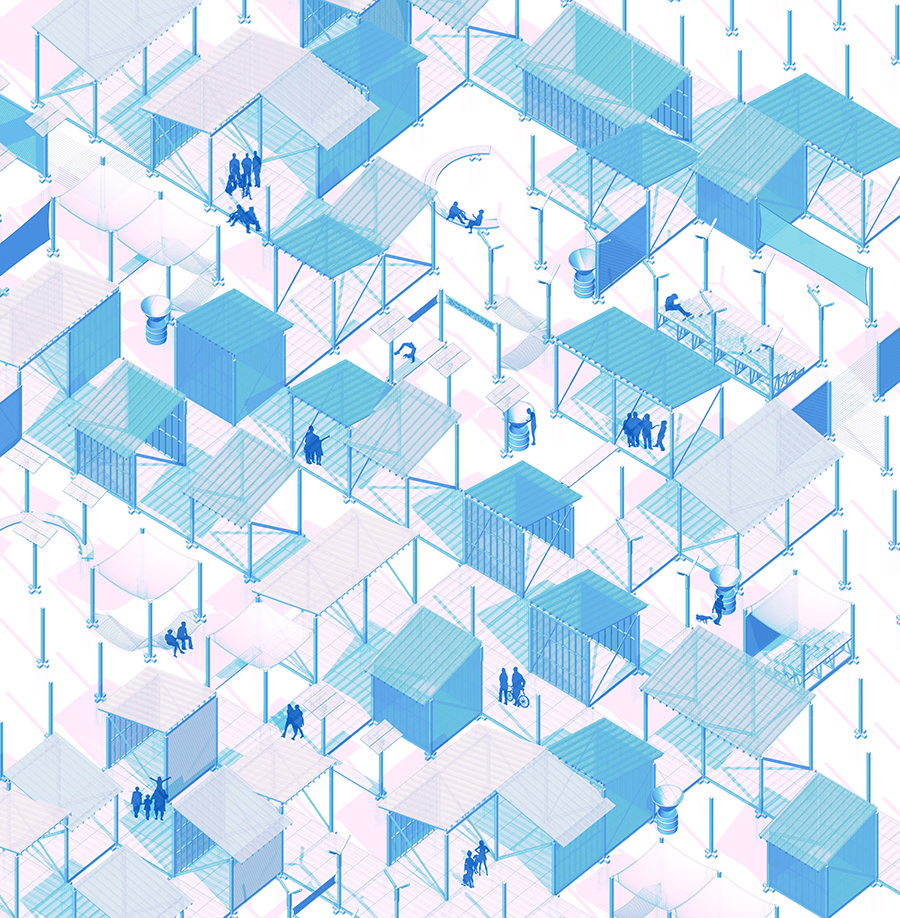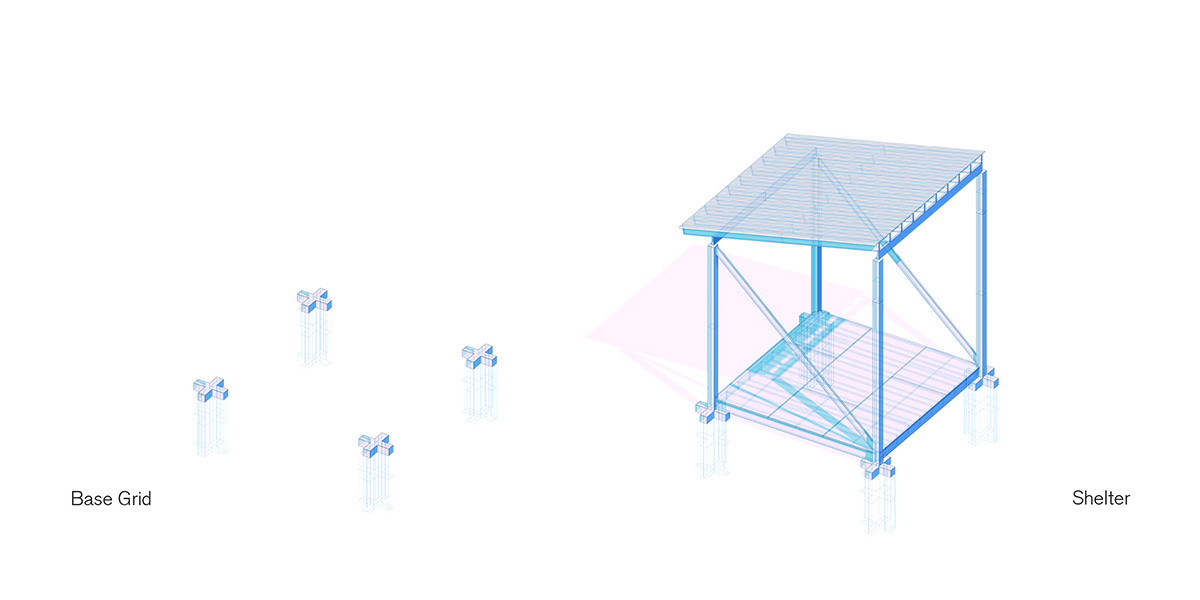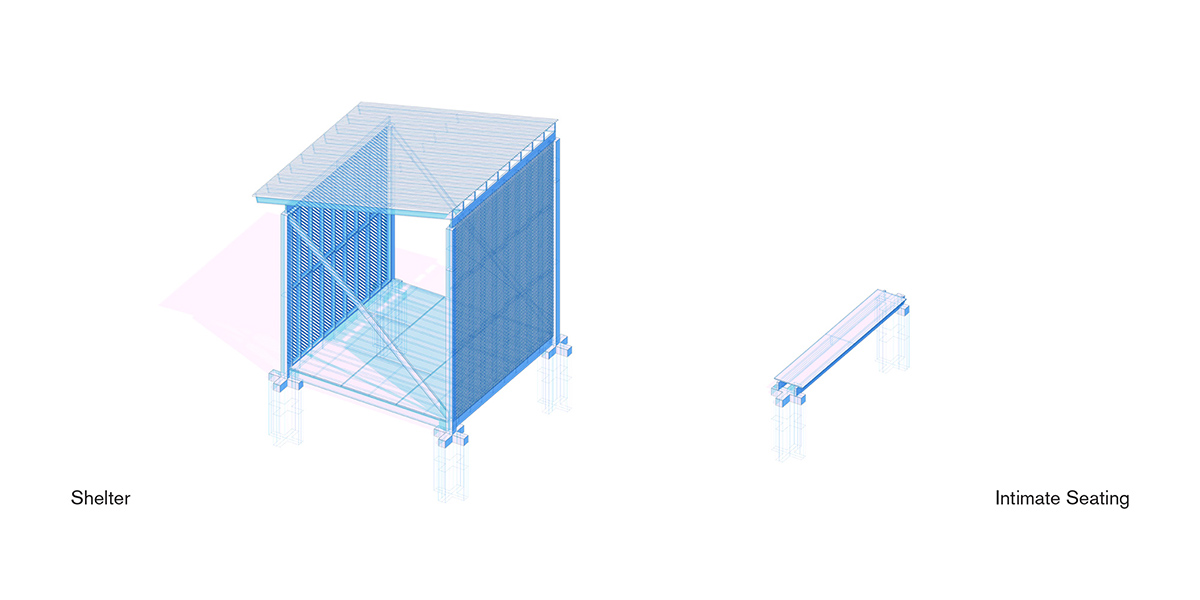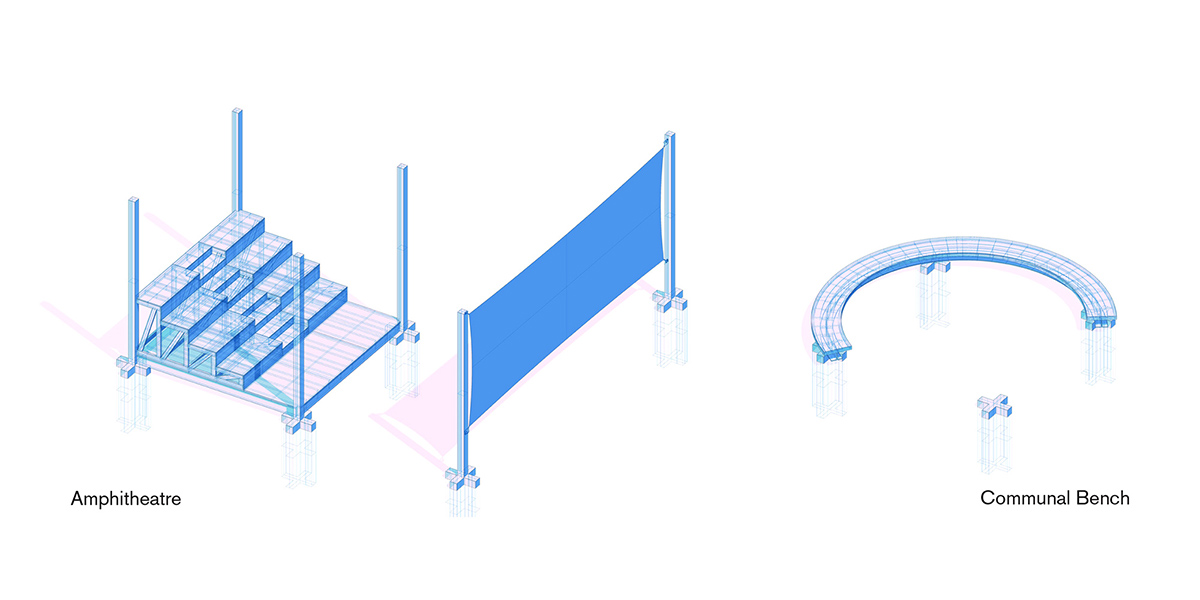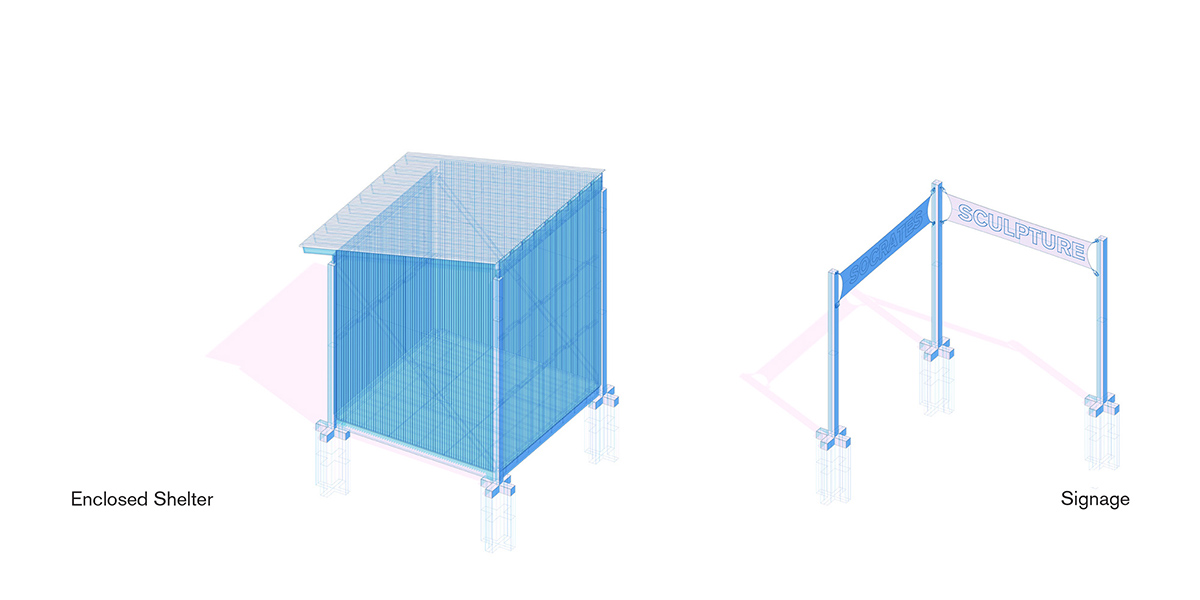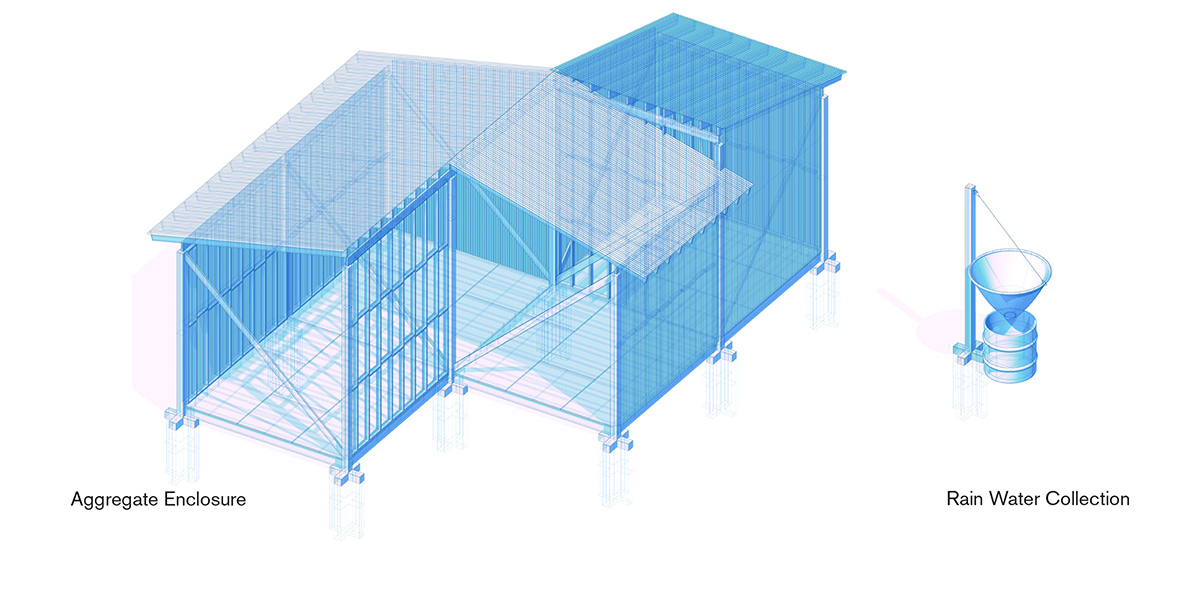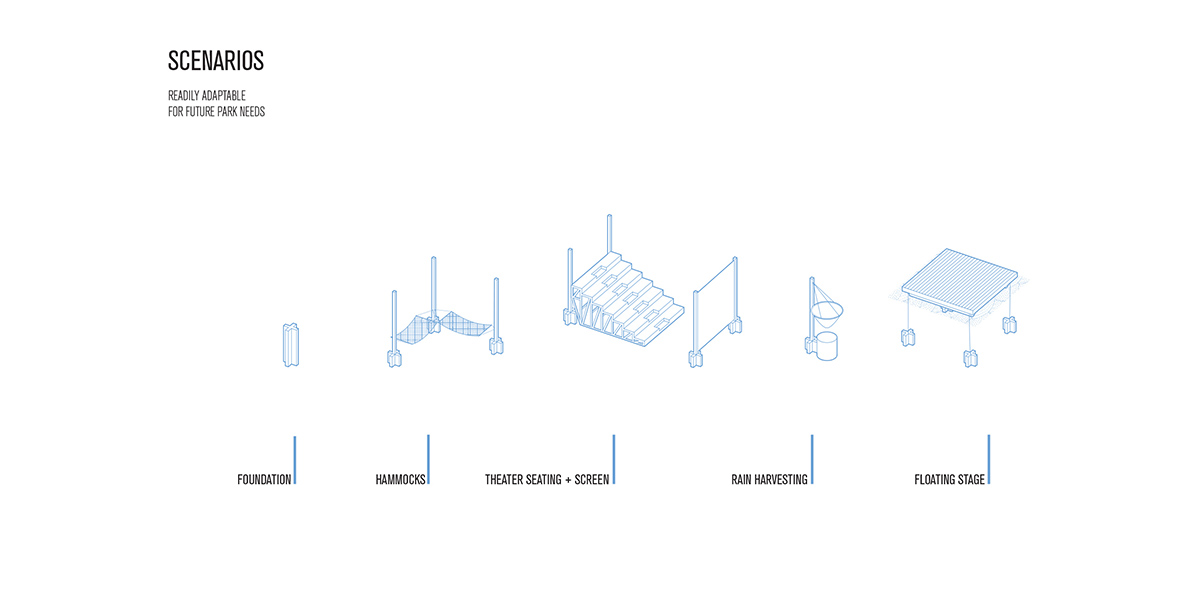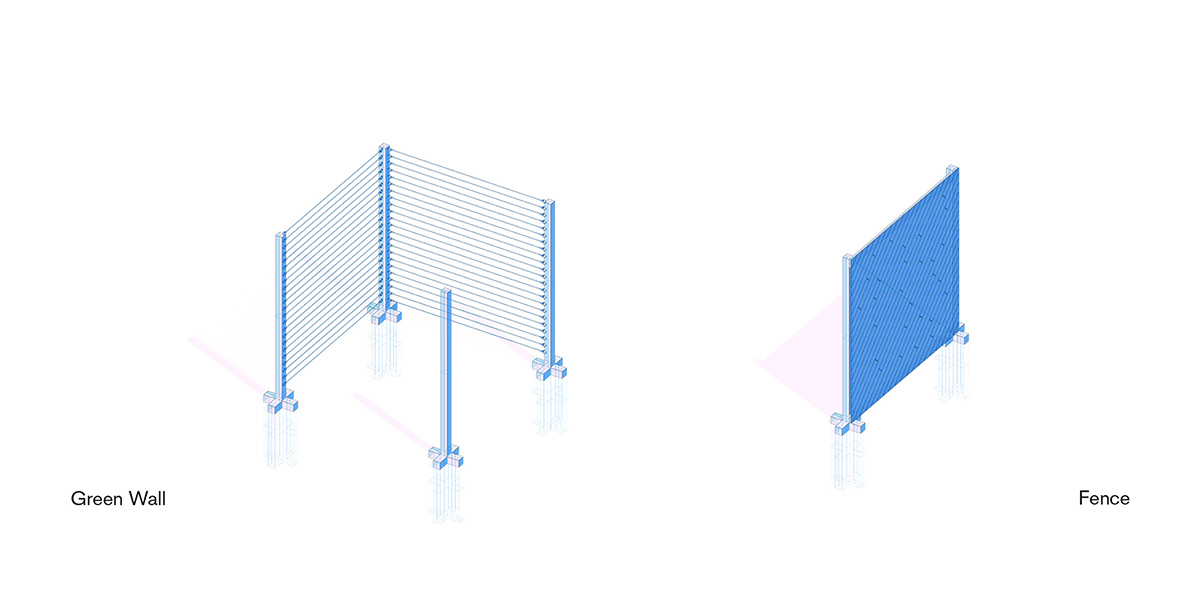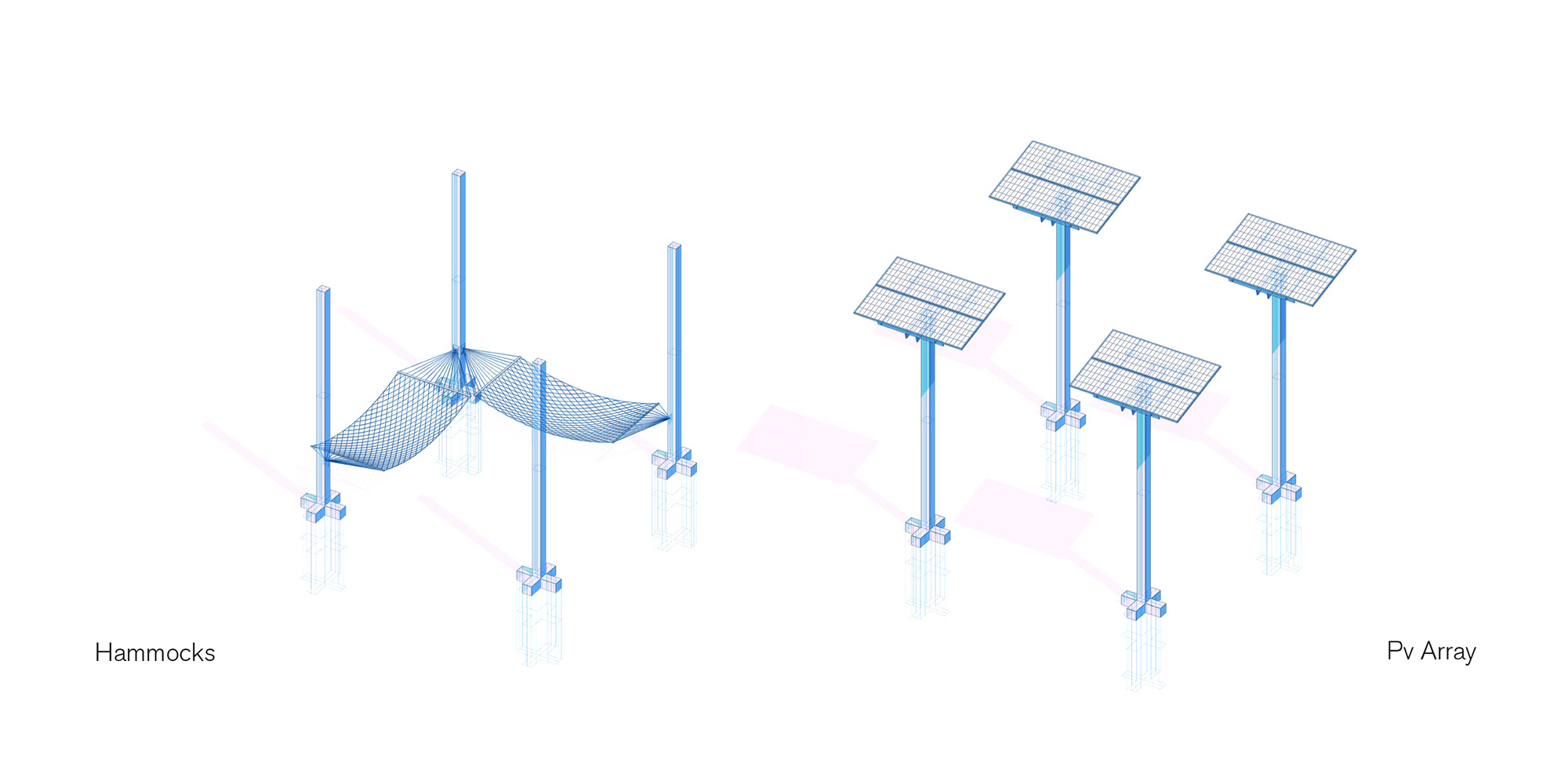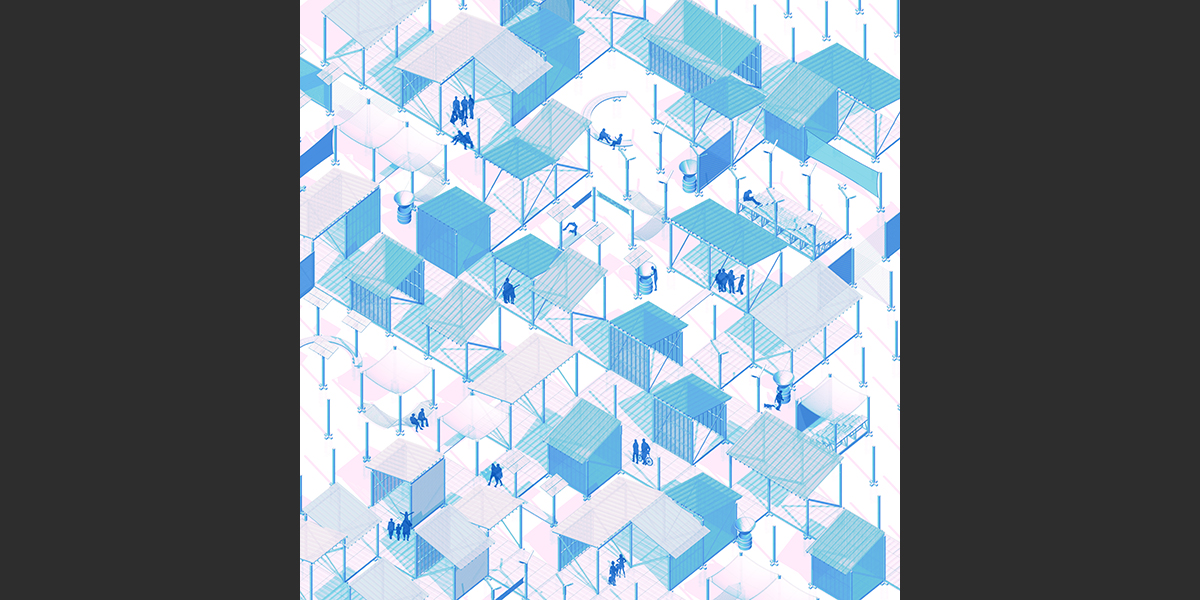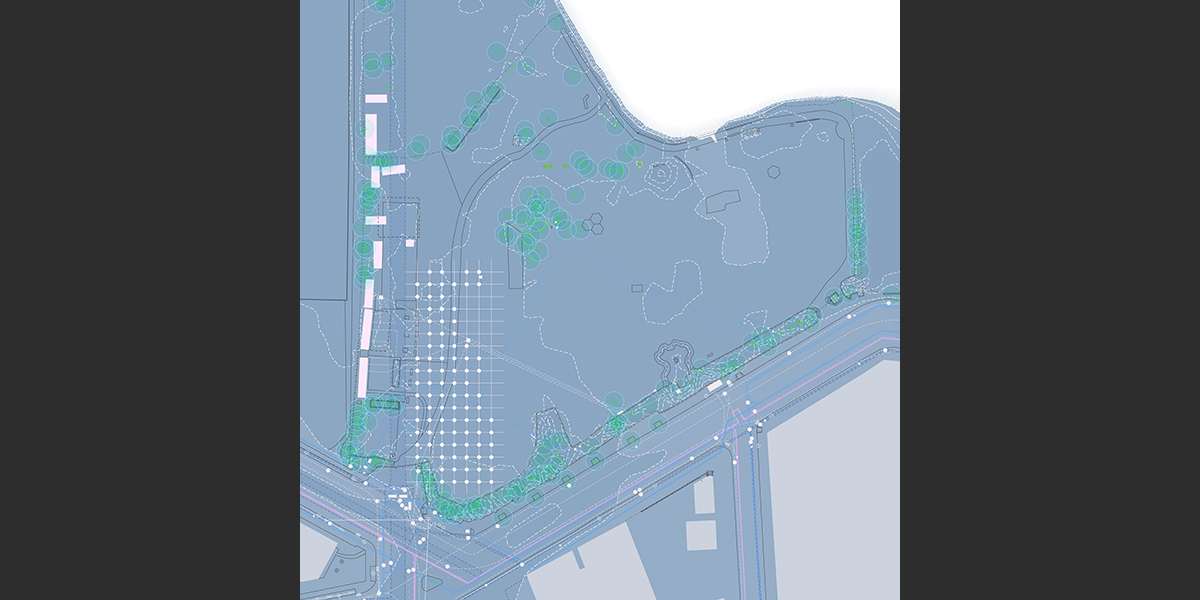Competition entry, 2016
Project Team: Thomas Heltzel, Barak Pliskin, James Quick, and Amy Shell
Ground Works is Pliskin Architecture’s entry for the Folly 2016 competition, organized by The Architectural League of New York and Socrates Sculpture Park. Folly 2016 is a design/build competition that explores the relationship between art and architecture, while also durably addressing and improving the conditions at Socrates Sculpture Park.
Our proposal, Ground Works, decouples the Park’s development from the realities of intermittent and limited funding by acting as a framework to guide future projects. Ground Works lays a foundation, figurative and literal, which would allow an array of activities to be installed on and around it. Concrete piers are set in the ground and spaced to allow for easy assembly using commonly found materials. As funds become available, Ground Works is populated, and serves as the armature that allows the Park to evolve and organize. In turn, Ground Works allows the Park to set long terms goals, and to use the limited funds available for this summer’s Folly towards a phased improvement of the Park. Rather than develop a project whose longevity is compromised by fleeting materials that would fit a limited budget, we ask how this project could act as a long-term investment for the Park, its resident artists, and future Folly designers for decades to come.
Competition Text
What if we could stretch an investment beyond a season? If what we design today serves the Socrates Sculpture Park for a decade to come? How can we infuse the Park with a framework for many events and functions, while allowing it its mission and use to evolve?
For the past four years, the Folly competition has been an opportunity to challenge architecture’s relationship to sculpture. Completed on shoestring budgets, the built works demonstrated innovative and frugal use of reused materials and celebrated unique functions seldom found alone in traditional architecture projects. However, the freedoms and innovations of these projects were only made possible with the caveat that they were meant to exist the duration of one summer – Venustas and Utilitas at the expense of Firmitas. Furthermore, the randomized collection of transient structures – shipping containers and sheds – that have been used to fill the Park’s need for additional educational space, has resulted in an undefined spatial sequence that falls short of projecting a unified image and Socrates Sculpture Park’s larger programmatic vision.
Long Term Goals
The new aim chosen for this year’s competition – to fuse form with utility, and to improve the physical conditions of the Park – demands a revaluation of durability while challenging the overall cohesion demonstrated by past projects. Furthermore, this would still need to be accomplished with a very minimal budget. Rather than develop a project whose longevity is compromised by fleeting materials that would fit a limited budget, we ask how this project could act as a long-term investment to the Park, its resident artists, and the future Folly designers for decades to come.
Our proposal, named Ground Works, decouples the Park’s development from the realities of intermittent and limited funding by acting as a simple framework to guide future projects. In turn, Ground Works allows the Park to set long terms goals, and to use the limited funds available for this summer’s Folly towards a phased improvement of the Park for years to come.
Foundation
We propose to lay a foundation, a figurative and literal one, which would allow an array of activities to be installed on and around it. Ground Works consists of a series of concrete piers, set in the ground, and spaced to allow for easy assembly using commonly found materials and methods. The installation of the piers is permanent and stable. While it awaits future interventions, the piers act as a type of land art, encouraging people to walk between them and artists to engage with them. As funds become available, as future Follies are erected, or as needs require – Ground Works is populated, and serves as the armature that allows the Park to evolve and organize. By using a set grid, growth need not be linear: designers, artists, educators can determine the needs and goals for a season, and erect permanent or temporary structures in locations that best suit these goals. As such, the Socrates site will be a work in progress, taking root and filling in gaps organically over time, leveraging the grid to fit pieces together over time.In its adaptability, Ground Works supports a host of programming needs. Whether open air activities, covered workshops or enclosed gatherings, new spaces can be built onto the foundation, relying on its permanence to establish their presence on site.
With these foundations already laid, Ground Works is a cost effective approach for addressing the existing and unforeseen future Park needs, such as shelter, separation, education, recreation, and resilient infrastructure.
Rising Permanence
As demonstrated through a series of scenarios, the Ground Works framework offers a wide and easily malleable spectrum of design components: fences, rain barrels, solar panels, stepped seating, classrooms, and meeting areas. When combined, these spaces become a curated art and education village that reflects seasons of construction, artists’ points of view, and the Park’s evolving vision. With the Socrates Sculpture Park set to finally become official parkland, Ground Works approaches this year’s Folly competition in a way that both pragmatically and imaginatively celebrates this major step in the Park’s history and provides a framework for its expansion and rising permanence.



